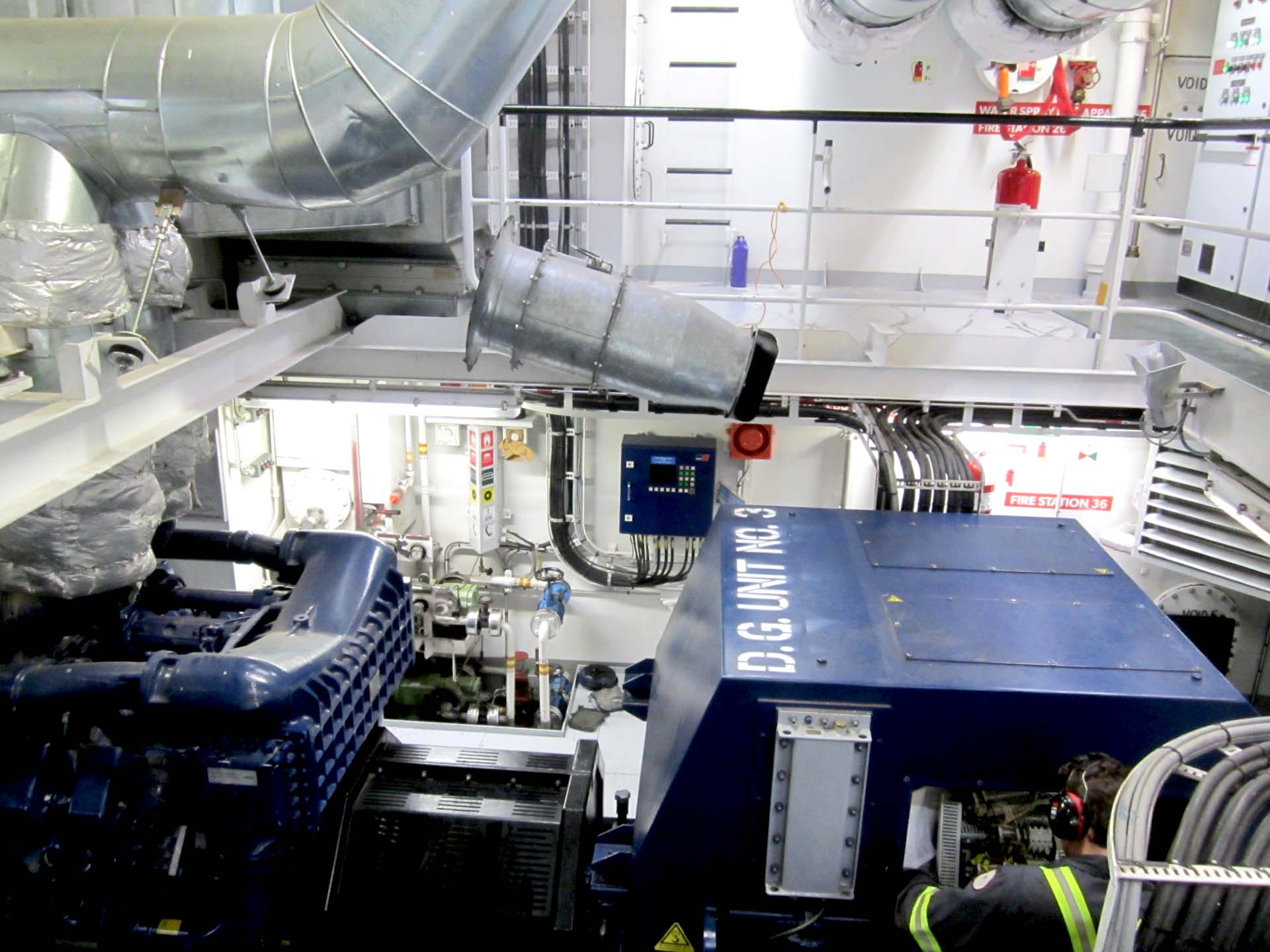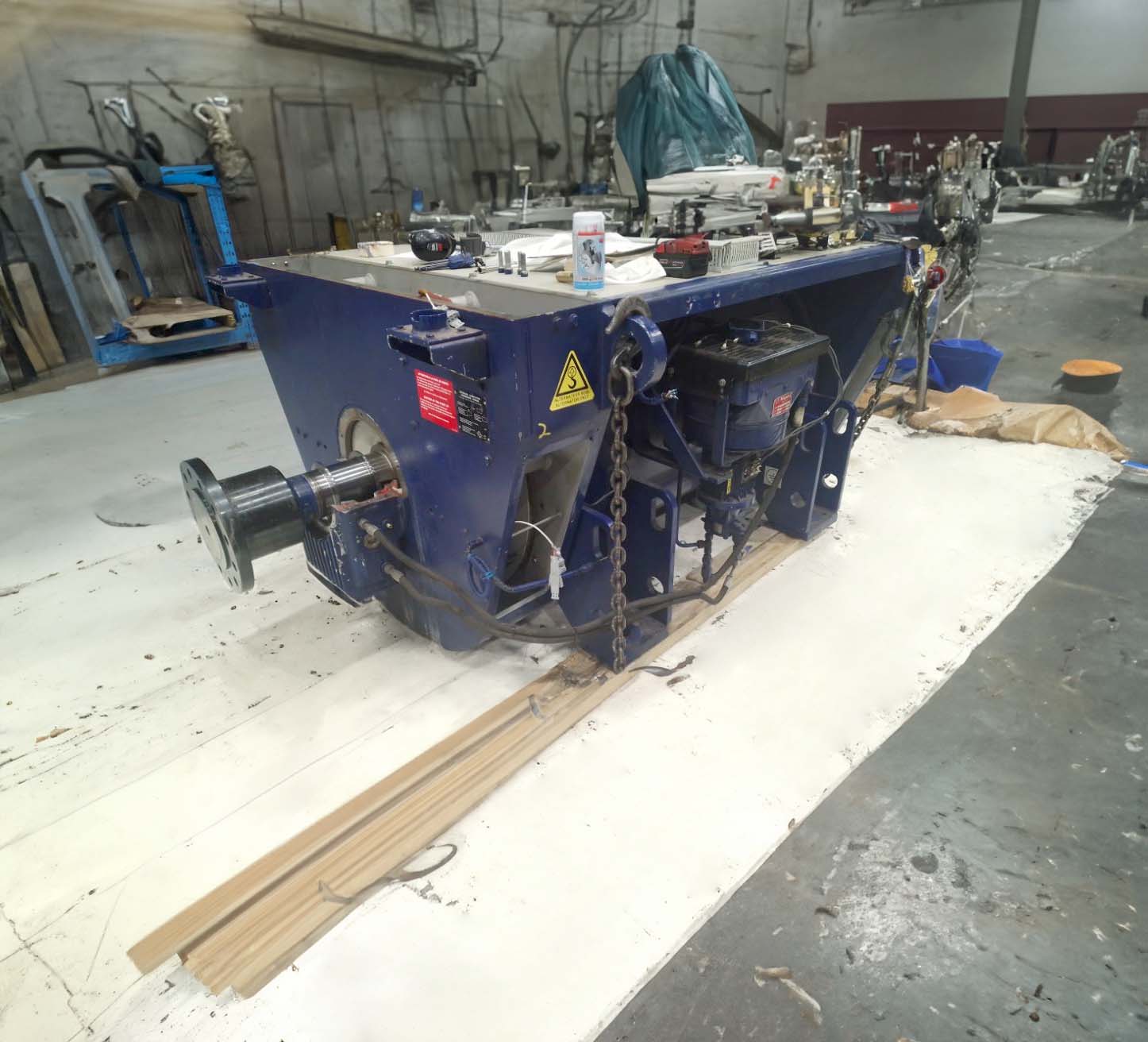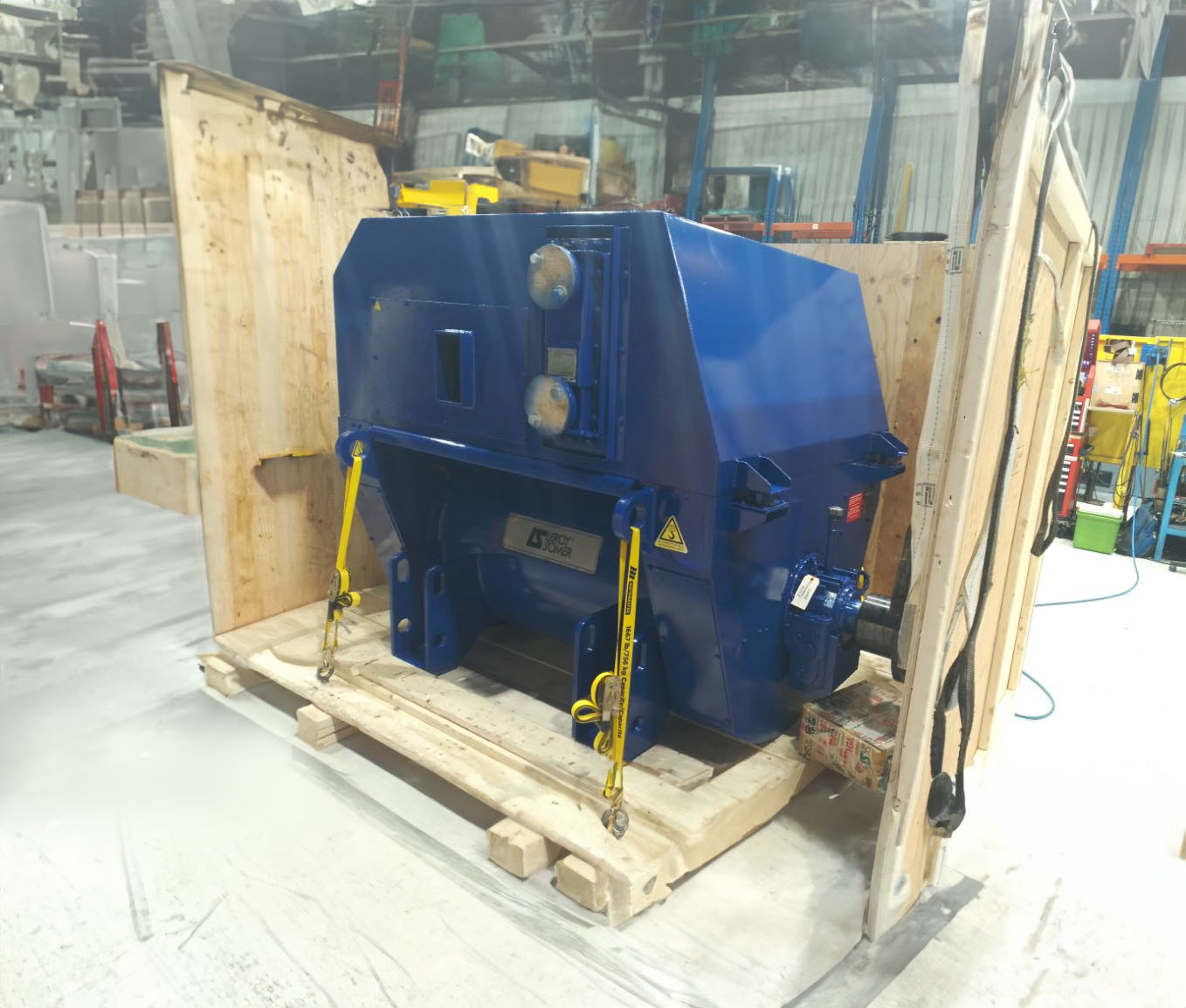Suivez-vous
- YouTube


This project presented several technical and logistical challenges, and the cause of the problem was unknown. As a result, the engine and generator had to be completely removed. The size and layout of the equipment required the ship to be partially cut open on the side so that the two parts, the diesel engine and the generator, could be removed using cranes.
As soon as the generator arrived at LM’s workshops in Montreal, the team began a thorough inspection process. To identify the cause of the problem, each step was carried out with the utmost rigour:
Complete disassembly of the generator
The generator was disassembled piece by piece to analyze every detail. Each component was visually inspected for damage.
Electrical tests : All electrical components were tested according to our procedures and those of the alternator manufacturer. We compared our test results with those performed by the Energy Division technician two years earlier, as well as the manufacturer’s tests for this unit. Visually, we noticed overheating of the insulation on the exciter rotor. Further tests were performed to verify the initial tests.All our electrical tests are performed with calibrated equipment.
Mechanical tests : All mechanical components were measured according to our SKF work procedures and the measurements recommended by the alternator manufacturer, using calibrated and certified precision tools.
Exemplary transparency: Validation and reporting
One of the crucial moments was the external validation stage. A detailed failure report with photos prepared by Carlos Santamaria, our supervisor, was submitted to the customer. This document contained our analysis following the evaluation, as well as our recommendations for refurbishing the alternator. Each test and each result were recorded in the report.
To ensure complete transparency, the ship’s insurer came to our workshop to witness the final checks. Together, they reviewed the data, analyzed the parts, and validated the experts’ conclusions. The final verdict was clear:
The Kato generator was not the cause of the failure.
No major anomalies were found, confirming that the generator was operating within expected standards.


Although the generator was not directly at fault, the LM team identified overheating in the exciter rotor after electrical testing. Our failure report concluded:
Recommendation for precision rewinding: LM rewound the exciter rotor to prevent any future electrical failures.
Use of original parts: All replaced parts were certified to the manufacturer’s specifications to ensure optimal performance.
The diodes were replaced with original parts supplied by the alternator manufacturer and checked before being installed on the alternator.
Compliance with strict tolerances: LM carefully checked that each mechanical and electrical component complied with Kato and Leroy-Somer manufacturing standards.
Final tests in the presence of the insurer: Load tests were carried out, validating the solution provided and confirming that the generator was working properly.
Thanks to LM’s expertise and proactive intervention, the customer benefited from a number of advantages:
Peace of mind:
Personalized assistance:
Local support and specialized expertise:
Customized solutions:
This project demonstrates our commitment to building a strong relationship of trust with our customers and partners through total transparency and constant technical support.
